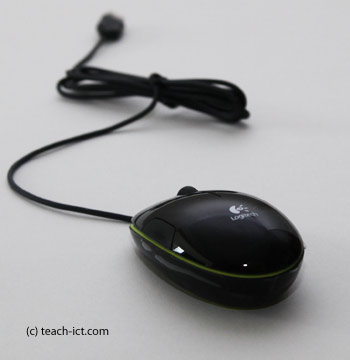3. Mouse
 Everyone is familiar with a computer mouse; along with the keyboard, it is one of the most common input devices you will use.
Everyone is familiar with a computer mouse; along with the keyboard, it is one of the most common input devices you will use.
A mouse is also called a 'pointing device' because it enables you to control what happens on the screen by moving the mouse on your desk and pointing, clicking and selecting items on the screen.
A mouse usually has two buttons, a right and left one and also a central wheel which allows you to scroll up and down the page (some mice have up to five buttons). The left and right button have different functions. Left clicking usually lets you put your cursor at a certain point on the page or lets you choose a menu item. Right clicking brings you up a list of relevant menu items from which you can select a task.
Many of the older styles of mice used a ball which moved against two internal rollers to record the direction that the mouse was being moved in. Recent versions of mice use 'optical' or 'wireless' technology to track mouse movement.
Turn over the mouse you are using right now, do you see a red light? If you do, then you are using an optical mouse.
| Advantages of mice | Disadvantages of mice |
|---|---|
| Ideal for use with desktop computers | They need a flat space close to the computer |
| Usually supplied as part of a new computer system | Older style mice which have roller balls can become clogged with grease and grime and lose their accuracy until cleaned. |
| Most computer users are familiar with them and require little training | Excessive use can lead to health problems such as repetitive strain injury (R.S.I.) |
| Works well in conjunction with a keyboard for data entry | If the battery wears out in a wireless mouse, it cannot be used until it has been replaced |
Challenge see if you can find out one extra fact on this topic that we haven't already told you
Click on this link: Computer Mouse
